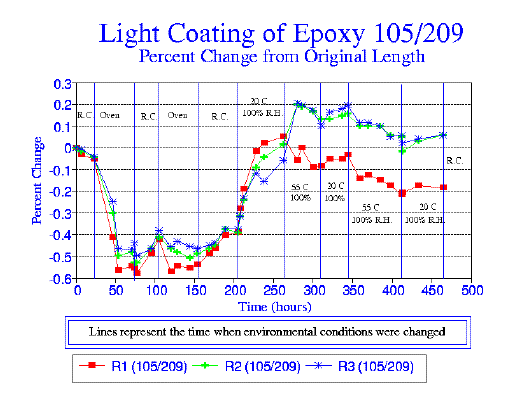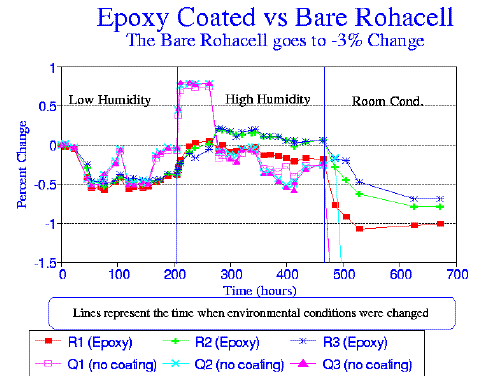Eric BoszeUniversity of California at
Riverside
April, 1995
The Relativistic Heavy Ion Collider (RHIC) is scheduled to come on line at
Brookhaven National Laboratory in April of 1999. The RHIC will accelerate
Gold nuclei to relativistic speeds in opposing directions and study their
interactions. The PHENIX project is an experiment to be performed at RHIC with
the primary goals of the detection of a new phase of matter, the quark-gluon
plasma, and the measurement of its properties. The Heavy Ion Group at the
University of California at Riverside (UCR) is currently involved in the
development of the PHENIX Detector, more specifically, the Multiplicity Vertex
Detector (MVD) subsystem. The MVD is the first detector that particles produced
by the heavy ion collison will come into contact with. The signifigance of the
MVD lies in its ability to measure the multiplicity of the collision.
The MVD is constructed of an array of 300mm thick Silicon detectors. The
Silicon wafers are glued to 24 hexagonal open structures made from a rigid,
polymethacrylimid foam known commerically as Rohacell. Two characteristics of
Rohacell were responsible for its selections, namely, its strength and low
density. Rohacell has, however, been found to expand and contract depending on
the changing humidity of its surrounding environment. Tests have demonstrated
that when the humidity level of the surrounding environment is less than 50%,
the Rohacell will contract, and when the humidity is greater than 50%, it will
expand. It is thus logical to assume that the expansion and contraction of the
Rohacell could result in either the fissure of the Silicon-glue bond to the
Rohacell or the cracking of the Silicon wafer. This failure possibility has
obvious implications for the MVD. The objective of my current research is
focused on finding a coating that will make the Rohacell support less
susceptible to moisture changes in its environment. This paper will describe
the procedure that I used to test various coatings and offer preliminary
findings.
Two methods used for measuring the amount of moisture absorbed into a coating
include Moisture Absorption and Permeability Value. Moisture Absorption is
defined as percent by weight the material will absorb. The Permeability Value
is related to the rate at which moisture can diffuse through a coating. It is
possible for a coating to have a low Moisture Absorption and still retain a
high Permeability Value. In fact, most coatings have a high Permeability Value
due to pinholes in the coating. Thus far, the coatings that have shown the
most promise in preventing structural changes in the Rohacell resulting from
moisture levels in the environment are the 105 West Systems Epoxy with 209
Hardner and Parylene. Parylene, which is a vapor deposited in a vacuum, adds
little mass to the Rohacell and is one of the most moisture resistant coatings
on the market.
A detailed explanation of my set up and results to date is as follows.
1. In order to make the cages to the right dimensions, two Rohacell blocks
were glued together with HEXCEL Eplite 5313 Vesin with hardner. A machinist
took the glued block and cut the "C" cage out of it. At times, instead of
testing the whole cage, strips that were roughly the same dimensions as the
sides of the cages were tested. The testing process was the same for both the
strips and the cages.
2. To assure that the coatings would stick, a small, medium bristle paint brush
was used to clean the surface.
3. The brushed Rohacell was dried in an oven at about 65 C for 24 hours. The
heat expelled the moisture from the Rohacell.
4. Coatings were mixed per directions on the labels. Rubber gloves and eye
protection were worn to safely handle the materials under a vented hood. Before
application, the 105 epoxy was precured for about 2 hours at room temperature.
At this stage, the epoxy can be applied to the surface of the Rohacell to
prevent it from running and so as not to cause bubbles to form on the cage
edges. The coated Rohacell is then set to complete its cure overnight at room
temperature.
If a second coating is needed, the first coat is allowed to dry for about 2
hours. The composite is then allowed to dry overnight. (Note, the second coat
is also precured before its application.)
The epoxy coating was applied to the Rohacell by the following procedure:
5. The dried Rohacell was taken out of the drying oven to be coated. While
wearing rubber gloves, the epoxy was spread with a wooden stick in a single
motion in order to make the film thickness as uniform as possible.
6. For a measure of variance, test samples were made in triplicates.
Several uncoated Rohacell strips were left to act as a control base.
7. All coatings were allowed to dry (cure) for 2 days before testing.
8. Cured strips were measured for their length and mass, then placed into the
first testing environment (each strip's length was measured three times so as
to calculate an average, a standard deviation, and a range to estimate my
measurement errors)
9. The strips were placed in an environment for about 48 hours. During that
48 hours, their length and mass were measured several times to observe changes
as they adjusted to the surrounding environment.
10. After the 48 hours, the samples were taken out of the test environment and
measured again for their length and mass. They were then exposed to a
different environment where they were left for 48 hours and length and mass
measurements were again calculated 2 to4 times.
11. The procedure was continued until approximately 400 hours of testing was
completed. Using that time frame, the strips were exposed to about 8 to 9
environments
- Table 1 contains strip data taken on January 10, 1995 at 3:30 p.m. in an
environment of 22 C at 55% R.H. High humidities were achieved in a jar with
conditions of 55 C at approximately 100% R.H. The strips are identified as N1,
N2, and N3. Their length was measured three times in mils, from which the
average, range, and standard deviation were calcualted.
| | N1 | N2 | N3 |
| | 4001 | 4002 | 4005 |
| | 4002 | 4003 | 4002 |
| | 4000 | 4002 | 4003 |
| Average | 4001 | 4003 | 4003 |
|---|
| Range | 2 | 1 | 3 |
|---|
| STD | 1.18 | 0.59 | 1.77 |
|---|
Jan. 10, 1995 3:30 pm Conditions: Room: 22 C at 55% R.H. Jar: 55 C at ~100%
R.H
The Parylene coating was tested following the procedure described above
- Mitutoyo caliber No. 505-627 to measure length.
- Denver Instrument Company XE Series milligram digital scale Model 300. to
measure mass.
- Omega HX-11V temperature/humidity probe to measure temperature and
relative humidity.
- With the assistance of Miguel Noriega, I have tested the feasibility of
several coatings including polyurethane, water seals, epoxies, and a vapor
deposited coating.
- The coating that has demonstrated the most promise is the 105 West System
Epoxy with 209 hardener. The following graphs contrast the performance
differences between a 105 Epoxy coated Rohacell strip and an uncoated Rohacell
strip.
The vertical lines indicate the time at which the environment was altered
during the 400 hours of testing. The temperature and relative humidity levels
of the various environments are given. In the legend below the graph, the
letter-number identifies the strip, and the numbers in parentheses tell which
hardener was used, how many coats were applied to the strip, and how long the
coating was allowed to precure before it was applied to the Rohacell. The
y-axis shows the percent change in length relative to the length at zero time.
Graph #1
- The three replicate strips with the same coating performed in a surprising
consistent manner with tightly distributed readings.
- Even though the coated strips expanded/contracted in a similar manner to
the uncoated strips, their percent change was dampened by a factor of about
three. This is accurately reflected with the environment change from 20 C at
100% Relative Humidity to 50 C at 100% Relative Humidity. Here the uncoated
strip changed about - 0.6% in length, whereas the coated strips shifted about -
0.2%. Even a single coated strip showed the dampening effect with respect to
environmental changes.

Graph #2 (Graph #2 is an extension of Graph #1)
- When all the samples were brought back to room ambient conditions, the
uncoated strip took a large and permeate - 1.4% shift in length while the
coated strips leveled out with only a - 0.35% shift in length.

- The coated Rohacell strips appear to dampen the effects of
humidity/temperature changes in many cases. It is most pronounced with
temperature changes at humidities greater than 50%.
- When the strips are brought back to room ambient conditions, the coated
strips show less hysteresis; i.e., the ability to return (close) to their
original length.
Just Bare RohacellJust Parylene Coated
Just Parylene Coated vs. Bare Rohacell
Lightly Coated Epoxy vs. Bare Rohacell
Parylene-Epoxy Coated vs. Bare Rohacell
Epoxy-Parylene Coated vs. Bare Rohacell
Light Coating Epoxy, then Parylene


